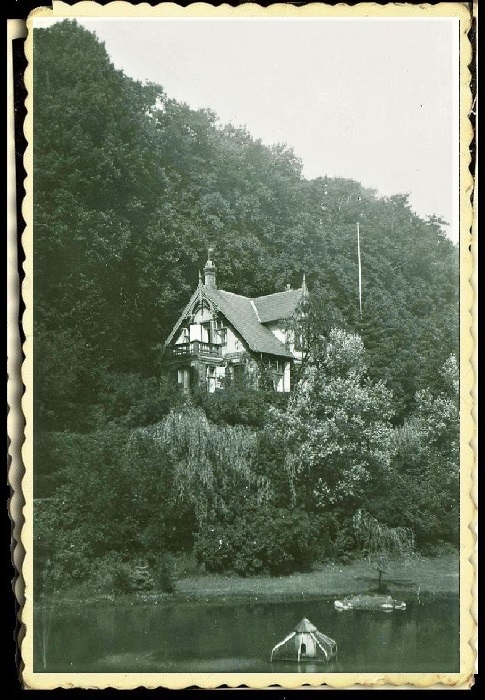Kejser Villa
Emperor Aleksander´s Imperial Villa at Fredensborg & other pavillions

Top illustration: The Swiss cottage at Bernstorff Palace
The Fredensborg-days were summer family gatherings albeit with a large family counting several Royal houses in Europe. It is often said that the Russian Emperor Aleksander III felt so at home visiting Denmark that he wished to acquire property. In 1885, his eyes fell on a small house situated on a slope near the Fredensborg Palace, overlooking the village pond down Fredensborg´s main street. Here he could work on his state papers and perform physical fitness exercises in private. The ownership was celebrated with a housewarming in the beginning of October 1889


The villa was decorated with carved, wooden ornaments, the location on a high slope overlooking a pond surrounded by tall trees resembling that of a Swiss cottage. The cottage was to become the Emperors´own little jewel. In fact, he was so fond of the place that the house was given prominent place in the 1890 Fabergé easter-egg, the so called “Danish Palaces Egg”, a present to his wife. The house had on the ground floor a winter garden, a salon, a dining room and stairs for the first floor apartment consisting of two bedrooms, dressing rooms and rooms for a maid or valet; furniture delivered by C.B. Hansen – not great luxury, but commodious and in great taste. Many happy times have probably been spent in the house, the Empress calling it “My little Gatchina” after her own favorite Palace. September 17th 1891, the Emperor invited his mother-in-law (The Danish queen Louise) to celebrate her birthday, the food prepared by himself in the small kitchen, asking his Danish teenage nieces to lay the table. After the Emperors´death in 1894, the house was never used. In 1917, it was still fully furnished and almost ready for visits. The cottage was inherited by Grand duchess Olga and her sister Xenia who sold it in 1929, as part of the estate belonging to the late dowager Empress.


The 1888 great Nordic Industrial- and Agricultural Exhibition in Copenhagen was that years biggest social event. More than 29 organisations were exhibiting in several pavillions laid out between the Town Hall square, the Tivoli amusement parc and the grand central station. Subjects included both hygiene, farming, fishing, navy, army, industry, a cattle show and sports. The grounds also included a lake with a ship, a labyrinth and several wooden pavillions. In the largest were exhibited arts and crafts, both represented by Danish Royal Porcelain Factory and the famous ceramics design factory P. Ipsens Enke. The modern industrial age was being rendered and exhibited with every progress from gaz-engines to bicycles to COLD butter and sealed metal containers for storing and protecting various goods.
The Russian Pavillion, a large wooden structure decorated with lots of gilded Romanov eagles and gilded cupolas, created the entrance to the Russian exhibition in the great exhibition Hall. It was later, at Imperial and Royal request moved to the grounds at Fredensborg Palace. It was dismantled and sold in 1919
Very cleverly, the author of the review of the exhibition at the Russian Pavillion at the Nordic Industrial- and Agricultural Exhibition, wrote an article in the illustrated news (Illustreret Tidende) constructed as a fairytale but using a slightly ironic tone, creating a hidden yet very specific political criticism of the Russian Empire: The Danes were well acquainted with the monarchical exterior trimmings of the Romanov Dynasty; The canon-fire escorting the Imperial carriages and the Imperial yachts in the harbor; The Imperial summer visits, the Hurrahs and people thronging in the streets as the Imperial guards passes by. Known was also the vast population and enormous wealth and resources: Malachite, lapis Lazuli, gold and silver. The Ural mountains, the endless fields of golden wheat. The court with its wealth of velvets and silks and bronzes and porcelain. And known is also the works of Turgenjev and Dostojevskij. And as the author tells us: Those modern readers, who have followed Dostojevskij into powerty and dirt, bloody brutality and idealism, courage, complaints, suffering and crime, they will not find Russia as they know it. Because the Exhibits are made to adorn the rooms of princes, the jewels made to hang around princesses necks. And those who enters the Russian Pavillion will find only the gilded world of the Empire, telling only the story of the Emperor´s delights (Illustreret Tidende no. 35, 1888)







